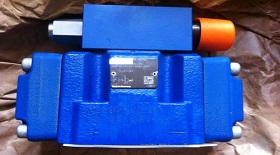Working principle of hydraulic cylinder in hydraulic elevator
Hydraulic elevator is a kind of elevator equipment composed of walking mechanism, hydraulic mechanism, electric control mechanism and support mechanism.
Mainly through the hydraulic pressure transmission to achieve the lifting function, its shearing fork mechanical structure, so that the lift has a higher stability, a wide operating platform and a higher carrying capacity, so that the high-altitude operation scope is larger and suitable for multi-person simultaneous operation. It makes the aerial work more efficient and safer.
Hydraulic oil forms a certain pressure by vane pump and enters the lower end of the hydraulic cylinder through oil filter, flameproof electromagnetic reversing valve, throttle valve, hydraulic control one-way valve and balance valve. The piston of the hydraulic cylinder moves upward, lifts heavy objects, and the upper end of the hydraulic cylinder returns to the tank through flameproof electromagnetic reversing valve. Its rated pressure is adjusted by relief valve. Observing the reading value of the pressure gauge through the pressure gauge.
The piston of the hydraulic cylinder moves downward (the weight falls). Hydraulic oil enters the upper end of the hydraulic cylinder through explosion-proof electromagnetic reversing valve, and oil returns to the tank through balance valve, hydraulic control one-way valve, throttle valve and explosion-proof electromagnetic reversing valve at the lower end of the hydraulic cylinder. In order to make the weight drop smoothly and brake safely and reliably, a balance valve is set on the return road to balance the circuit and maintain the pressure, so that the descending speed is not changed by the weight. The throttle valve regulates the flow rate and controls the ascending and descending speed.
In order to make the brake safe and reliable and prevent accidents, a hydraulic control one-way valve (hydraulic lock) is added to ensure the safety of self-locking when the hydraulic pipeline bursts unexpectedly. An overload alarm is installed to distinguish overload or equipment failure.
Electrical control system controls the rotation of motor by explosion-proof button SB1-SB6, and the reversal of explosion-proof solenoid reversing valve to keep load rising or falling, and adjusts the time delay through "LOGO" program, so as to avoid the frequent start of motor and affect the service life.
Transmission Exhibition opened. I am looking forward to your arrival.



